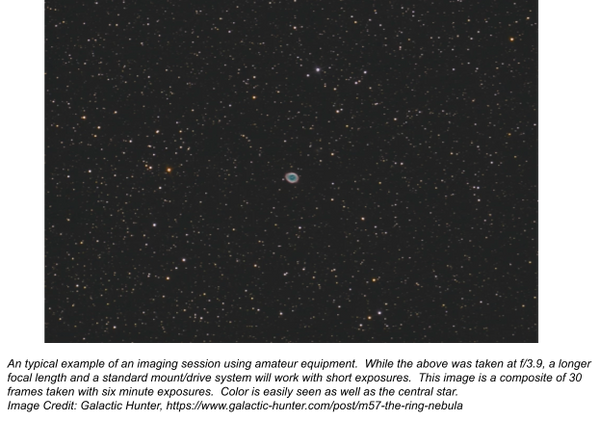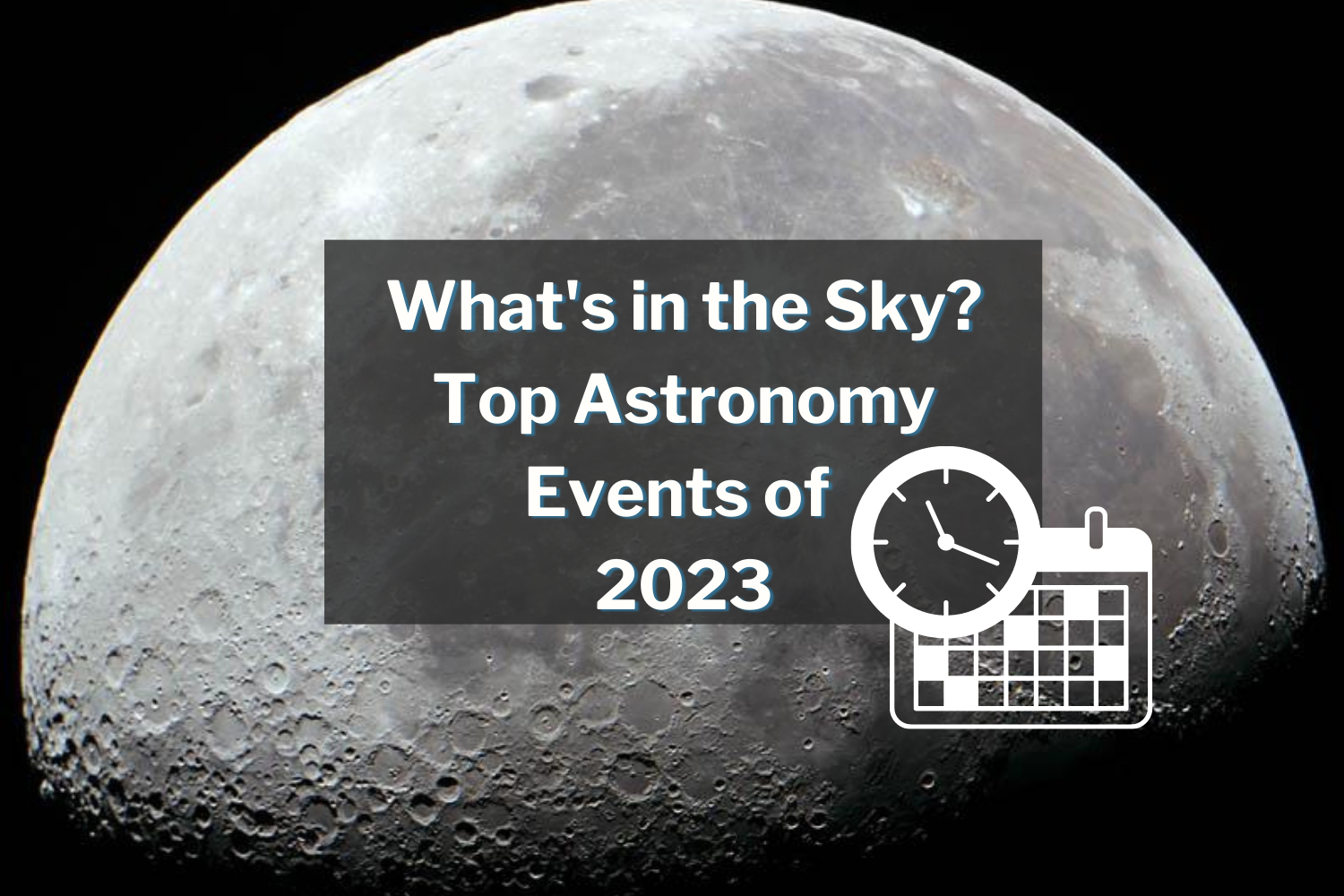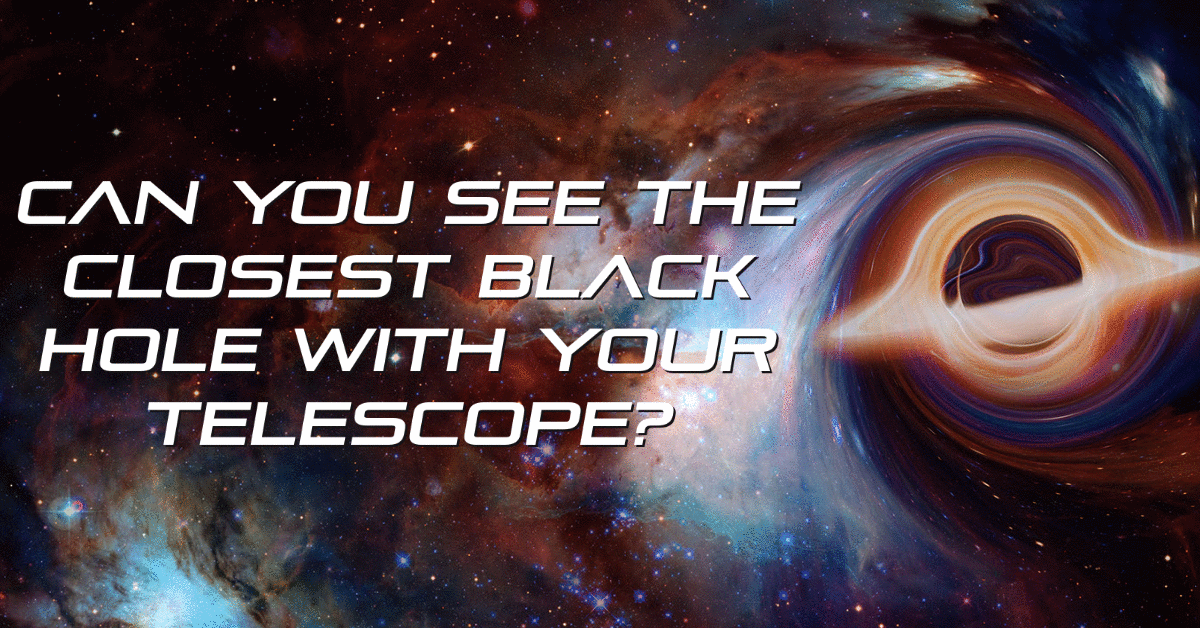Star Death in the Constellation Lyra
Constellation of Lyra is a Summer Sky Wonder
The Constellation of Lyra is visible in the Northern Hemisphere from Spring through late Fall and contains one of the brightest stars in our night sky: Vega. Vega is 25 light years away and is the fifth brightest star overall in our night sky. One of the more easily identifiable constellations, Lyra looks like a bright parallelogram with a triangle at one corner.
The ancient Greeks thought his pattern looked like a harp, and for the amateur astronomer, there is a treasure located within its stars: The Ring Nebula, Messier 57. This object is a stellar remnant, the celestial gravestone of a star that died long ago and serves as a look-ahead at how our own Sun will die in about 5 billion years.
When stars about the size and mass of our Sun die, they expand into a Red Giant and release a magnificent shell of gas into the surrounding area which, depending on the angle we’re looking at it from, appears like a ring or dim husk around a bright dot.
There’s a lot to worry about when it comes to light pollution in our night skies, many of us have to contend with very high Bortle skies that diminish what we can see, the Lyra Constellation however, remains bright in many metropolitan areas and is a place in the heavens we can still explore.

How to Visually Observe M57 - The Ring Nebula
The Ring Nebula in the constellation of Lyra the Harp is one of the few remaining targets still visible using an eyepiece, and under average skies around Bortle 5, even binoculars. It appears as a faint, gray circle using binoculars like the Celestron Skymaster 15x70, there isn’t much detail (looks like a slightly extended, round smudge), and usually only experienced observers know it when they see it. Using binoculars is challenging for the Ring Nebula, but can be done.
The smoke ring structure and color begins to reveal itself under about 50 power and is best viewed using an f/10 or so optical system. As with all things related to amateur astronomy, the larger the aperture, the more detail you will see and you can get truly stunning views of this object using an 8-10 inch Schmidt-Cassegrain and a Plössl or Nagler Eyepiece. You can also see the central star using a Nagler 6mm eyepiece on this telescope, albeit under slightly higher magnification.
The most beautiful view of the Ring Nebula I have ever seen was with a 20-inch f/4 with a 27mm Panoptic eyepiece.

How to Image M57
Most of us these days take pictures of the night sky using cameras attached to our telescopes instead of observing through eyepieces, and good results can be obtained using modest equipment. Entry level telescope imaging systems will capture the Ring Nebula in minutes but best results are multiple exposures taken over several hours. This is one of the easiest targets to hit with your camera/telescope system.
Even the most casual attempts at imaging the Ring Nebula will produce color using a DSLR or through RGB filters co-added later. Keeping the exposures short will also compensate for any guiding errors or misalignment of polar mounts.

As with all deep-sky objects, to get a good image of the Ring Nebula, multiple, short exposures get the best results. Adding shorter exposures together not only compensates for light pollution (less sky background accumulates in the exposure), but as mentioned above, errors in guiding and polar alignment (or sky rotation, if not perfectly polar aligned) are minimized. There’s also the added benefit of sampling noise: the signal of the images increased directly with the number of exposures taken (10, 10-second exposures give the same results as one, 100 second exposure) but the noise (the grainy-ness in an image) only goes up by the square root of the number of exposures (the square root of 10 in this example, or about 3.16 vs. 100).
The Ring Nebula is How Our Sun Will Die
The constellation of Lyra is home to a celestial gravestone that is a glimpse into our own future. Our Sun will die in the exact same way as the star that created the Ring Nebula. Some five billion years hence, our Sun will begin to run out of fuel, causing it to shrink and heat up the core even hotter. This will create a lot of pressure and heat, swelling the Sun into a Red Giant. Once the last remaining dregs of fuel are consumed, the core will again shrink, leaving behind all of the gas in the outer shells of the Red Giant, a planetary nebula.
In the case of our Solar System, the Sun will swell past the orbit of Mars and might even go all the way out to Jupiter, obliterating the inner planets (including Earth).
What’s left behind after this swelling will be a strange star indeed: a white dwarf remnant that is no longer fusing atoms to create heat, but is instead a white-hot ember that will cool over tens of billions of years.












